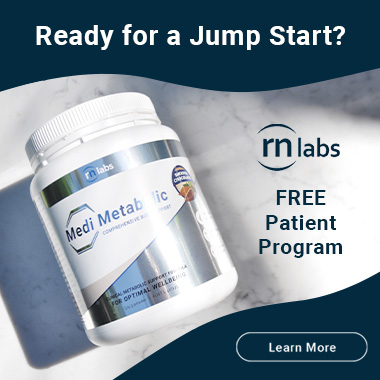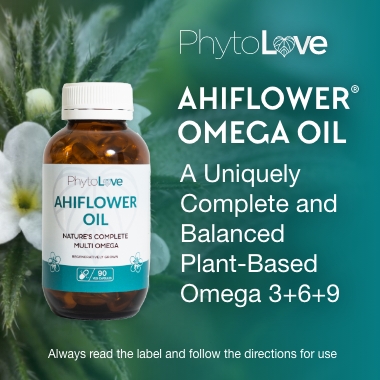Volume 31 Issue 3
Shifting epistemology and priorities in healthcare, opportunities abound
Susan Arentz
For referencing Arentz S. Shifting epistemology and priorities in healthcare, opportunities abound. AJHNM 2019;31(3):98-99
DOI https://doi.org/10.33235/ajhnm.31.3.98-99
Our ways of knowing and understanding have changed throughout history, influenced by cultural values, politics and priorities. In this modern, neoliberal era that emphasises open economies and competition, our lives and identities are framed by entrepreneurial beliefs, attitudes and thinking, with much enterprise geared towards satisfying consumers. In healthcare, naturopathy is theoretically an antidote for tired, single dimension healthcare due to a philosophical basis of holism and complexity, differentiated by its principles of practice. Recognition of naturopathy as a scarce asset may articulate increasing opportunities for the profession, but it requires an appetite for integration, and for leadership to extend the discipline beyond health utility and education to foster critical evaluation, questioning and challenging, and support solutions that enable us to walk the talk at all levels, including the organisational levels of our profession.
Holistic philosophical healthcare means thinking and knowing through the inclusion and integration of all influences affecting human health. It means incorporating a specialised knowledge of microbiology, physiology, psychology, spirituality, social and environmental determinants in a dynamically weighted matrix. Holism is the opposite to reductionism – which has been the dominant way of thinking in health over the past centuries – and has successfully provided significant and substantial health advancements including in-depth understandings of the origins of many serious diseases, pathophysiological mechanisms, genetics, microbiology and targeted drug discoveries, advancements that have saved many lives. However, the increasing prevalence of chronic diseases, healthcare dissatisfaction and failure has highlighted the need for new knowledge that extends beyond that gained through a micro-lens.
This dilemma has framed the health questions of our era and has led to different ways of thinking about humans from a demographic or an epidemiological perspective with a new public health agenda and discipline. Public health has a whole population perspective, a big picture view, where data of large groups are analysed and described by measures and patterns of associations incorporating social and economic determinants, and are underpinned by goals of equitable access to optimal health for all people1. Public health does not primarily seek to explain mechanisms of disease, but shapes distributions of health within and across populations, describing how population health manifests through the health of individuals.
Clinical practice has similarly evolved, with a new understanding of patients gleaned from many sources. The evidence-based medicine paradigm2 emerged into operationalisation in the early 21st century, utilising the ‘best available evidence’ according to graded classification systems in which some evidence is judged to be better than others, typical in neoliberalism. It has become apparent, however, that evidence synthesis, graded against single hierarchies (for example the National Health and Medical Research Council, NHMRC) may not in fact provide the ‘best available evidence’ to guide health policy and decisions, especially when there is insufficient or no high-level evidence. These insufficient findings articulate a gap in transparent information to satisfy health consumers’ needs. Policy makers, clinicians, patients and other health consumers still need to make decisions despite the lack of high-level evidence. Consequently, evidence synthesis methods have developed to include appraisal of the adequacy of treatment effects with incorporated contextual information like patient preferences, availability, costs and feasibility, rather than ‘best-evidence’ being defined as estimates of accuracy only, that is effects weighted against risks of bias3. This strategy provides health consumers with greater access to relevant and rigorous information, and informs evidence-based policy, clinical practice and patients’ decisions.
Successful response to health consumers’ needs is therefore turning out to be a multi-layered and dynamic affair, with even microbiology recognising the value of a more integrative and complex agenda4,5. Benefits from teamwork include the mapping of the human genome6 and the description of human microbiome ecologies7; however, significant health advancements of pure microbiology are becoming less common, possibly due to a saturation of knowledge generated from basic scientific approaches. In this context, naturopathy is a unique asset because it is already logically grounded in complexity. Naturopathic epistemology is inherently multi-layered and inclusive and, with the evidence of efficacy for whole system naturopathy building8-10, these factors add weight to the case for integrating naturopathy more than ever before.
In order to bridge the ideal, and the actualisation of true integration of naturopathy, clarity about leadership is needed11. Changes that are presently on the table, supported through continued high rates of use and sustained growth in naturopathic education, represent significant opportunity and transformation of the discipline. Realisation of our position now emphasises the need for teamwork and effective leadership. Leadership, congruent with naturopathy, is inclusive and has the capacity to integrate diverse internal and external views and opinions. It has the courage to consult at all levels and to acknowledge the established roles that have brought us to where we are, to inform and educate through transparent and accountable forums, and to guide direction of the profession in a way that resonates with members’ beliefs and values. This leadership framework harnesses resources and emergent possibilities and prevents imposition from divergent interests and agendas.
As we move through winter in Australia, many of us are carving out new career opportunities. You may already know that I have moved on from my position as Head of Naturopathy at Endeavour, a role I felt enormously privileged to have held. I take the opportunity to express my heartfelt gratitude and respect towards the Naturopathy Department. It is steeped in resources, integrity, knowledge and capacity, as well as a sincere commitment to students and the discipline, from which I learnt a lot and found truly inspiring and encouraging. What an awesome team they are. I wish for their continued growth and satisfaction in naturopathic education.
This third centenary year issue includes a walk through the colonial herbal medicine gardens of Sydney. This article exemplifies the encouragement and support of an early career naturopath through the acknowledged support of experienced naturopaths. It was glowingly peer-reviewed by an external academic historian specialising in colonial Sydney who expressed strong support for its publication due to both its academic integrity and its high regard and respect towards the profession and the NHAA. Congratulations to the author on a great article.
This issue also includes an illustration of our vulnerabilities as healthcare professionals caring for people at the end of life. It calls for the development of a peer support initiative to prevent potential personal and professional harm to us as clinicians.
In addition, Dr Wendy Maclean has summarised the clinical evidence of efficacy in the extensive MedJourn and MedPlant sections. Studies investigating herbal medicine or nutritional supplements are provided for improved glucose metabolism, liver function, treatment of psoriasis, improved fertility in women with PCOS and inflammation in overweight girls, reduced pain in osteoarthritis, and for neurological and psychological conditions of anxiety and depression, insomnia and Parkinson’s disease. Herbs and nutritional supplements include lemon balm, chamomile, Boswellia, turmeric, saffron, omega-3, NAC, inositol, probiotics, PEA and zinc. Enjoy.
Author(s)
Susan Arentz PhD, BHSc(Hons)
Editor, Australian Journal of Herbal and Naturopathic Medicine
PO Box 696, Ashfield, NSW 2131
editor.ajhnm@nhaa.org.au
References
- Baum F. The new public health. Oxford: Oxford University Press; 2016.
- Sackett DL, Rosenberg WM, Gray JM, Haynes RB, Richardson WS. Evidence based medicine: what it is and what it isn’t. British Medical Journal Publishing Group; 1996.
- Balshem H, Helfand M, Schünemann HJ, Oxman AD, Kunz R, Brozek J, et al. GRADE guidelines: 3. Rating the quality of evidence. J Clin Epidemiol 2011;64(4):401–6.
- Wake MH. Integrative biology: science for the 21st century. BioSci 2008;58(4):349–53.
- Greene JA, Loscalzo J. Putting the patient back together: social medicine, network medicine, and the limits of reductionism. NEJM 2017;377(25):2493.
- Consortium IH. A haplotype map of the human genome. Nature 2005;437(7063):1299.
- Turnbaugh PJ, Ley RE, Hamady M, Fraser-Liggett CM, Knight R, Gordon JI. The human microbiome project. Nature 2007;449(7164):804.
- Myers SP, Vigar V. The state of the evidence for whole-system, multi-modality naturopathic medicine: a systematic scoping review. J Altern Complement Med 2019;25(2):141.
- Ratnakumari M, Manavalan N, Sathyanath D, Ayda Y, Reka K. Study to evaluate the changes in polycystic ovarian morphology after naturopathic and yogic interventions. Int J Yoga 2018;11(2):139.
- Solomonian L, Kwan V, Bhardwaj S. Group-based naturopathic education for primary prevention of noncommunicable disease in families and children: a feasibility study. J Altern Complement Med 2019;25(7):740–52.
- Hughes DJ, Lee A, Tian AW, Newman A, Legood A. Leadership, creativity, and innovation: a critical review and practical recommendations. Leadersh Q 2018;29(5):549–69.






